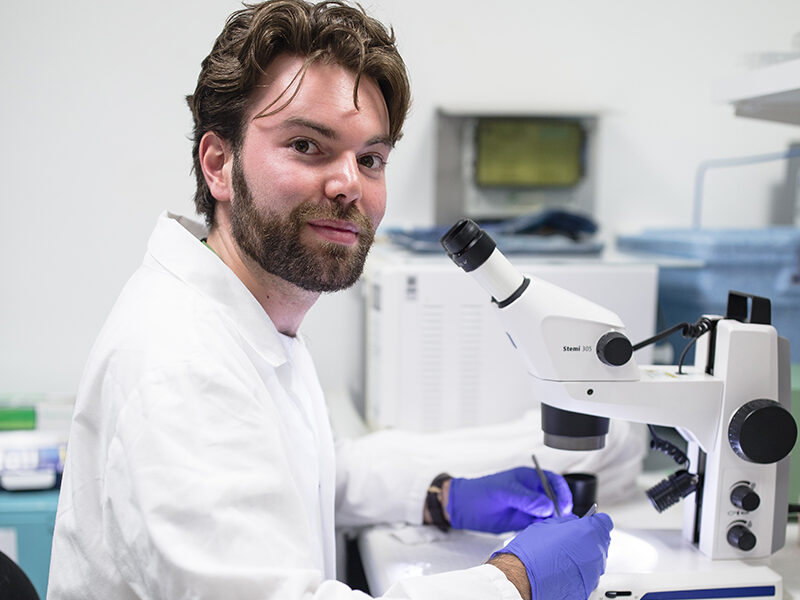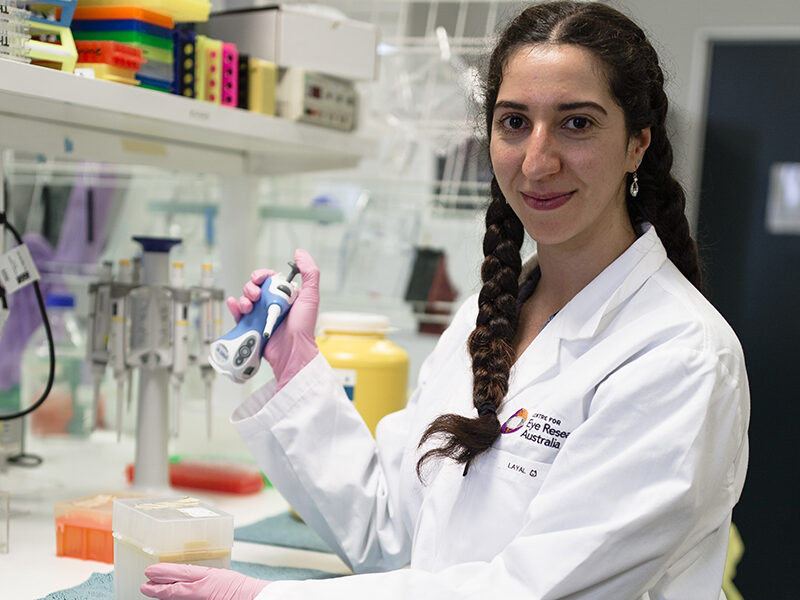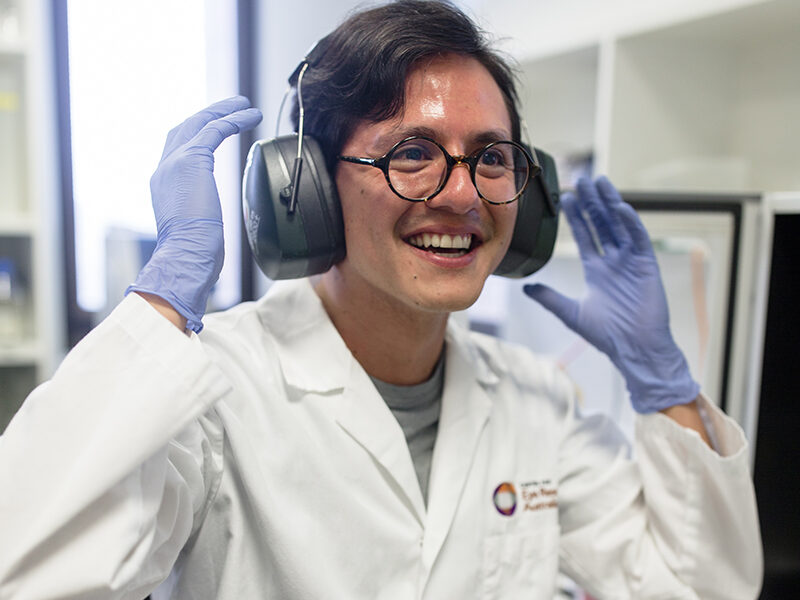Stories
Meet the future vision research leaders
University of Melbourne students are building the future of vision science at CERA.
In 2022, an increasing number of University of Melbourne students chose to undertake their studies at CERA.
In total, 25 higher degree researchers and 28 visiting students across bachelor, honours and masters level students joined CERA’s student group.
“In the past five years, the cohort has roughly doubled,” says Research Education Lead Associate Professor Ian Trounce.
“It’s been rewarding to see so many students come through CERA as part of their journey.”
Many students are from the University of Melbourne Medical School Surgery in Ophthalmology cohort, which is co-located within CERA, while others come from other departments including engineering, materials science, optometry and population health.
Associate Professor Trounce says CERA offers a unique experience with lab work located near clinical research.
“Even just walking through the Eye and Ear Hospital every day students are exposed to the issues that people living with vision impairment experience,” he says.
Coming from a diverse array of backgrounds and fields, students at all stages of their education are making a valuable contribution to our collective knowledge of eye disease.
Three of our students – all of whom have taken different paths to becoming involved in eye research – explain why they have chosen to undertake their research degree at CERA.

Jesse Gardner-Russell, Visual Neurovascular Research
Jesse is a Graduate researcher, working alongside Head of Visual Neurovascular Research Dr Luis Alarcon-Martinez, studying the connection between the brain and blood vessels in the eye.
He was the 2022 Valedictorian of the University of Melbourne’s Faculty of Science and is also President and Board Chair of the University of Melbourne Graduate Student Association.
His journey has taken him from information technology to studying stem cell therapies to molecular biology, and then to CERA.
Since joining in 2022, Jesse says he has been supported in juggling his advocacy work with the Graduate Student Association.
“The support I’ve received at CERA has been very positive – I’ve found it’s still possible to have a work-life balance,” he says.
“This has afforded me a unique learning experience not just in research but also in processes, people and governance – which are all essential skills for a career in science.”

Layal El Wazan, Genetic Engineering Research
Layal is president of the recently formed Ophthalmic Research Biomedical Society (ORBS) for CERA Graduate Students, and a recipient of the Medicine, Dentistry and Health Sciences John Landman PhD scholarship.
She has been interested in genetics since she first learned about them in Year 9.
“It all just made sense to me, and I thought ‘there has to be more to this,” Layal says.
She met Associate Professor Raymond Wong at an information night in 2017, and since then has done her masters degree, worked as a research assistant, and has now started her PhD in genetic engineering all at CERA.
“At CERA it’s been great to have been given opportunities to try different things,” says Layal.
“It’s a trusting community who work together very closely which gives you the chance to gain so many new experiences.”

Dr Jaime Montenegro, Corneal Research
After studying and practising medicine in Mexico like many other members of his family, Jaime came to the University of Melbourne to study a Master of Biomedical Engineering.
However, he wanted to do something more hands on with patients.
“I found Dr Karl Brown’s project on building engineered corneal tissue and wanted to bring my engineering and medicine skills together,” Dr Montenegro says.
“I wanted to find something more in line with my principles, and research lets me feel like I’m treating more than one person at a time.”
He says that the support he has received at CERA is helping him through his work.
“I’ve been here for one year – and being exposed to support resources and opportunities to join groups and committees is great to have extra on top of my work,” says Dr Montenegro.
“The student community at CERA is also really supportive through tough times in both my research life and personal life.”
This story was originally published in See the future: Annual Review 2022.
